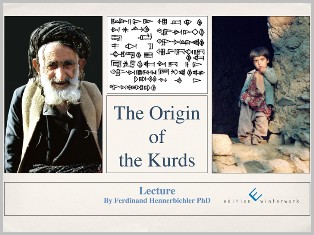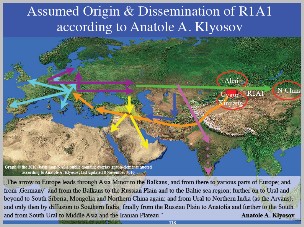R1A1 "Aryan" - fhe
Main menu
- H O M E P A G E
- THE ORIGIN OF THE KURDS 2011
-
CONCLUSIONS
- Prof. Windfuhr
- Prof. Klyosov
- Indigenous Kurds
- REACTIONS
- THE ORIGIN OF KURDS 2012
- DIE HERKUNFT DER KURDEN 2010
- DIE KURDEN 2004
- e-BOOK 2009
- CURRENT EVENTS 2011-2012
-
ARCHIVE
- Gas-Victims 1988
-
PICTURES
-
ANATOLIA
- VAN ANCIENT
- VAN-HAKKARI
-
KURDISTAN IRAQ
- BARZANI IRAN
- TALABANI
- FOLK COSTUMES
- Arbil
- GHN-45
- GAS-VICTIMS
- KORDESTAN IRAN
- ZAGROS
- PROFILES
- JERUSALEM
-
ANATOLIA
- THE FUTURE OF THE KURDS 2021
- KURD NATIONAL IDENTITY 2019
- PRIVATE PHOTOS
- CV English
- Lebenslauf
- COPYRIGHT & IMPRESSUM
R1A1 "Aryan"
Newest research on R1A1
Assumed Origin & Dissemination of R1A1
according to Anatole A. Klyosov
„There are newest data on R1A1 available. The most ancient discovered R1a1 haplotypes thus far are from the Uygur-
A couple of month ago a paper by Zhong et al. was published in Molecular Biology and Evolution (September 13, 2010), which contains a large set of R1a1 haplotypes, particularly from East Asia. The haplotype tree again identifies ancient R1a1 haplotypes, now from North-
Even the very fact that the base (ancestral) European haplotypes differs from the base Uygur haplotype by 7 mutations on 8 markers sets THEIR common ancestors apart by 26,000 years ago (this time span is needed -
Besides, the Altai (Uygurs) R1a1 haplotypes (as well as Tibetan, Mongolian and Chinese R1a1 haplotypes) belong to the ancient R1a1 subclade, with DYS392=13, while the Indian, Pakistani, Turkey, and European haplotypes typically belong to a much more "younger" subclade. It seems that a borderline between the ancient and the younger subclades goes through Tibet. There are very few DYS392=13 haplotypes in Europe, and they have apparently arrived to Europe some 12-
„The focal point for the assumed origin of R1A1 lies in the Uygur-
To the best of my knowledge the R1a1 bearers went from there through India, Pakistan, Iran, Asia Minor and to Europe, to the Balkans. This way is the only way to salvage the ,Anatolian theory‘, according to which proto-
Only from there R1a1 went to the Russian Plain, and probably via ,Germany‘, following the Corded Wire archaeological culture, to arrive there around 4,800 years bp.
In that case R1a1 made a loop – from Altai by the ,Southern route‘ (see above) via Anatolia to the Balkans, and from there via ,Germany‘ to the Russian Plain (from where R1a1 spread from the Baltics to the Black Sea), and then over the Caucasus back to Anatolia, Mitanni, Arabic Peninsula, and by ,parallel‘ route to the South Ural (establishing Andronovo culture on their way between 4,200-

